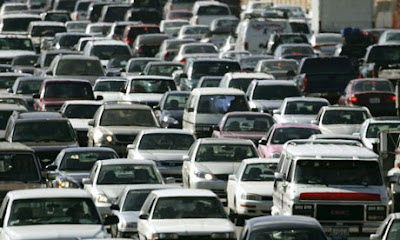Southern Californians are known for a love, if not obsession, with spending much of their time holding a steering wheel and staring at the tail lights in front of them.
One might think all the time on the road and money spent on cars would mean that risk will decline, but here is some new data that suggests the exact opposite can happen — when it rains:
Traffic crashes jumped more than 600 percent in Los Angeles County Saturday morning, compared to the same period last Saturday when roads were dry.
[…]
Some 422 crashes were reported in Los Angeles County between 5 a.m. and 10 a.m., CHP Officer Tatiana Sauquillo told the San Gabriel Valley Tribune. During the same period a week ago, when the weather was dry, 58 collisions were reported, she said.
This is a nice example to pull into information security discussions for at least two reasons.
First, given the technology advances to handle wet conditions people still were unable to avoid disaster. Just like with information security the users may not have had the latest technology, they may not have had sufficient training to use the technology, or they may simply have been in a situation that the technology was unable to prevent. It is clear that technology has not yet solved a problem — inclement weather control — that has been a serious concern for decades.
Second, it is not clear whether this risk was a factor in the decision by those who removed the largest streetcar system in the world and replaced it with asphalt and unprofessional drivers.
Clearly, GM waged a war on electric traction. It was indeed an all out assault, but by no means the single reason for the failure of rapid transit.
It was not the single reason, perhaps, because of natural market effects when new technology is introduced. Buses at first were probably easy to market as superior to the streetcar. Then cars were easy to market as superior to buses. Why the streetcar had to be removed is not clear, however, which is why a bus/car manufacturer might be seen as the source of pressure to remove the streetcar as an option.
Whether or not you buy the conspiracy, or the natural market, argument about technology choices for transportation in Los Angeles there continue to be some very interesting data points related to the study of risk compared with other urban areas. In brief, factors like pride, conformance, convenience, cost, etc. may drive consumers (pun not intended) into positions of higher short-term and long-term risk.
 “Exhibit 2” from General Motors and the Demise of Streetcars, Transportation Quarterly, Vol. 51. No. 3 Summer 1997, p. 52
“Exhibit 2” from General Motors and the Demise of Streetcars, Transportation Quarterly, Vol. 51. No. 3 Summer 1997, p. 52

People who lived in Southern California used to be able to take a trolley from the mountains to the ocean through Los Angles. The state of LA traffic/public transportation is quite sad; it’s slowly getting better, but is still annoying when compared to other cities such as San Francisco or London. I like to blame GM; it’s convenient and timely.
One interesting by-product of the Los Angeles trolley system is the miles of public staircases throughout the hills in Silverlake and Echo Park. Former trolley stops were at the bottom of the staircases. LA Times article: http://articles.latimes.com/2008/apr/14/health/he-nustairs14
Off topic (but it is History): pictures of how the Army Corp of Engineers hid the Lockheed Burbank airplane plant during WWII: http://thinkorthwim.com/2007/08/19/1034/ Quite ingenious.